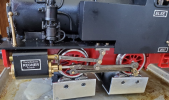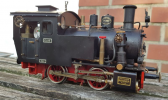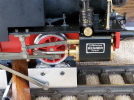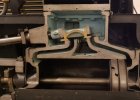This is probably a stoopid suggestion?
Are the axle-ends / wheels 'keyed', so the wheels will only go on in certain positions?
If so, what would happen if one side was assembled 180 degrees 'wrong'? - would this put one side in 'reverse' compared to the other?
My thinking is that either side would appear to run (if driven on its own) but both sides driven, if one is in reverse, they would 'lock' each other??
It makes sense in my head, anyway.



PhilP
Are the axle-ends / wheels 'keyed', so the wheels will only go on in certain positions?
If so, what would happen if one side was assembled 180 degrees 'wrong'? - would this put one side in 'reverse' compared to the other?
My thinking is that either side would appear to run (if driven on its own) but both sides driven, if one is in reverse, they would 'lock' each other??
It makes sense in my head, anyway.
PhilP





